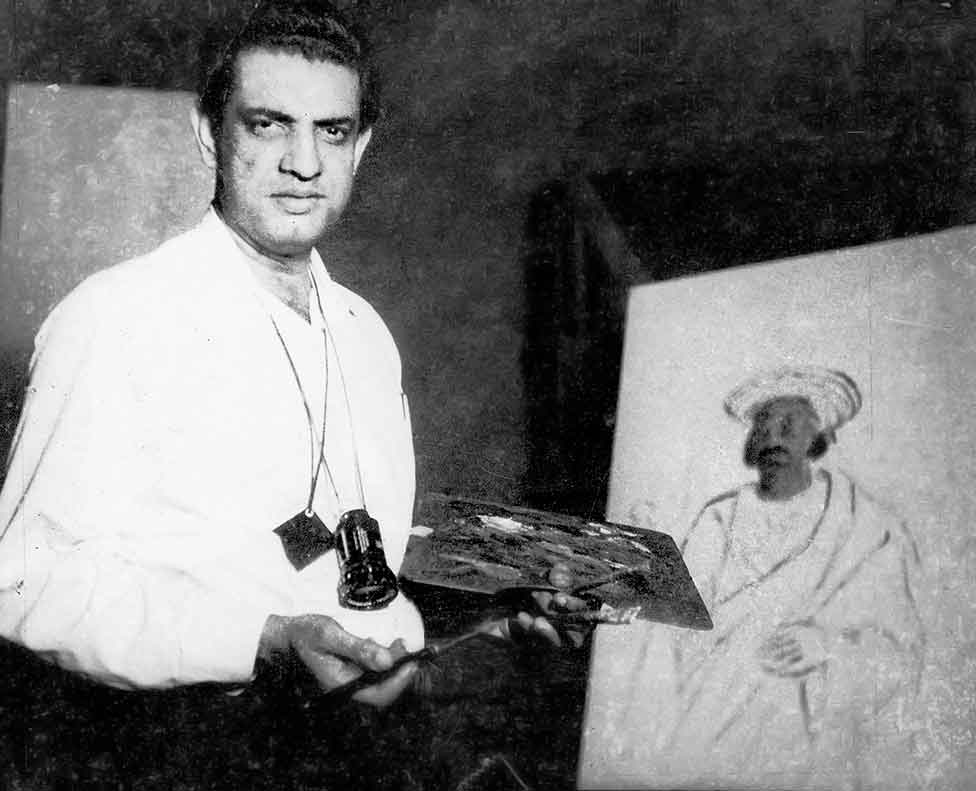Lily Chakraborty, all of 79, went back to work when most of the city was still working from home. “The producers called me, saying they were resuming shoot from July 15. I joined on July 31.”
Chakraborty stays in the same building as her sister’s family in Dum Dum ever since her husband passed away 11 years ago. “They were unwilling to let me go out but I was feeling suffocated and anxious sitting at home.”
Chakraborty has completed 62 years in the film industry, starting with the laugh riot Bhanu Pelo Lottery in 1958. “It was a small role (of the typist Maya).” Ten years later, she would play the lead in another Bhanu Banerjee film, Bhanu Goenda Jahar Assistant.

Satyajit Ray Sourced by the correspondent
Basking in Ray
Few know that she was close to bagging the lead too in Satyajit Ray's film Apur Sansar when she was 17. “Sharmila was having trouble getting leave from school to shoot. One of his (Ray’s) production managers took me to their Lake Temple Road house. Bijoya (Ray) boudi tene chul bedhe dilen. He (Ray) said he had already spoken to a girl and if it worked out with her, I was not to feel disappointed. I was brought up in Madhya Pradesh and had no clue who Satyajit Ray was,” she laughed. The same year, she did a scene in Suchitra Sen’s Deep Jwele Jaai too.
A milestone film in her career is Tapan Sinha’s Hasuli Banker Upokotha. “I was doing major roles at this time though not heroine, except in Bibaho Bibhrat (another laugh riot with Anup Kumar and Rabi Ghosh). “But I never called Manikda to remind him that he had promised to consider me in future.”
Then she left for Bombay, returning briefly to do Tarun Majumdar’s Phuleswari. “I played Sandhya Roy’s sister-in-law.” It was in Bombay that she received a letter from Ray, saying he had liked her in Phuleswari. “He wanted me to do a role in Jana Aranya, Shankar’s novel that he was adapting for the screen.”
Chakraborty dropped all work to come and do the film. “Later when he visited Bombay, he took me to Rajkamal Studio to finish the dubbing.”
Fifteen year later, she would be cast again in Ray’s Sakha Prosakha. “Ami onar khub pochhonder artiste chhilam. When he finished scripting for Uttaran, Boudi had asked; ‘Ei role ta ke korbe?’ He had responded: ‘Kyano? Amader Lily achhe’,” she smiled at the recollection. Ray passed away soon after and the film was directed by his son Sandip.

Lily Chakraborty with Sharmila Tagore Sourced by the correspondent
Chakraborty left for Bombay on getting an offer in a mythological film. “At that time in the 70s, Naxalite violence was at its peak. The frequent bombing affected filming. Work reduced in Tollygunge.”
The project took time and she ended up renting a place in Bombay. “Tanuda (Majumdar) came over to read me the Phuleswari script. Mukulda (Dutta, the lyricist) was also there. The hotel was just behind our residence yet Mukulda insisted on sending me home in a car, so his driver could see my place.”
A week later, the driver came to pick me up. “Mukulda’s wife Chand Osmani, a famous actress of the time, was cooking jeere diye machher jhol. Mukulda said Gulzaar had seen my Deya Neya and wanted to meet me. So I went over. He was about to marry Rakhee around that time and I spotted a high-heeled pair of shoes outside.”
Gulzaar read her a script and then asked how her Hindi was. “Till then he was conversing in Bengali. As I switched to Hindi, he exclaimed that I was as good as Jaya (Bachchan). I said we hailed from the same state, Madhya Pradesh.” That film was Achanak, where she acted opposite Vinod Khanna.
Next year, she did the star-studded Chupke Chupke. “Hrishida (Hrishikesh Mukherjee) directed it. Achanak too was his production. He had recommended my name.”
Around this time, Uttam Kumar sent for her to do Bhola Moyra. “He had wanted me in another film after Deya Neya but said he had to give the role to someone who asked for it and he could not say no.”
Chakraborty could not return to Bombay after completing Bhola Moyra as the theatre fraternity insisted that she was needed here. “I always had a soft corner for theatre as I used to act on stage from my youth,” she recalls. Bilkis Begum, co-starring Subhendu Chatterjee, ran for five years. “It would have gone on if Bijan Theatre did not close for renovation. Even the last night was houseful, like the first,” she recalled.
Chakraborty has a lot of memories with another stalwart, Ray’s favourite actor Soumitra Chatterjee. “We worked together in a string of films in recent times — Tumi O Tumi, Sesh Chithi, Meyemanush, Saanjhbati... Abalamban has still not come out. We did not share a scene in that film, being part of two different families.”
The last film they worked in together was Saanjhbati, which was shot extensively in Salt Lake. “That film has received a lot of appreciation. Everyone did well. Dev worked so hard in that film, especially on dubbing.”
As she gets up on being called for a group photograph, it strikes one that Chakraborty and Chatterjee shared more than screen. They had in common a commitment that defied all other considerations, including their advanced age — to work. “They (the producers) do have a good system in place. The studio is sanitised, my car is sanitised…” she assures one, on being requested to be careful in these pandemic-hit times.










